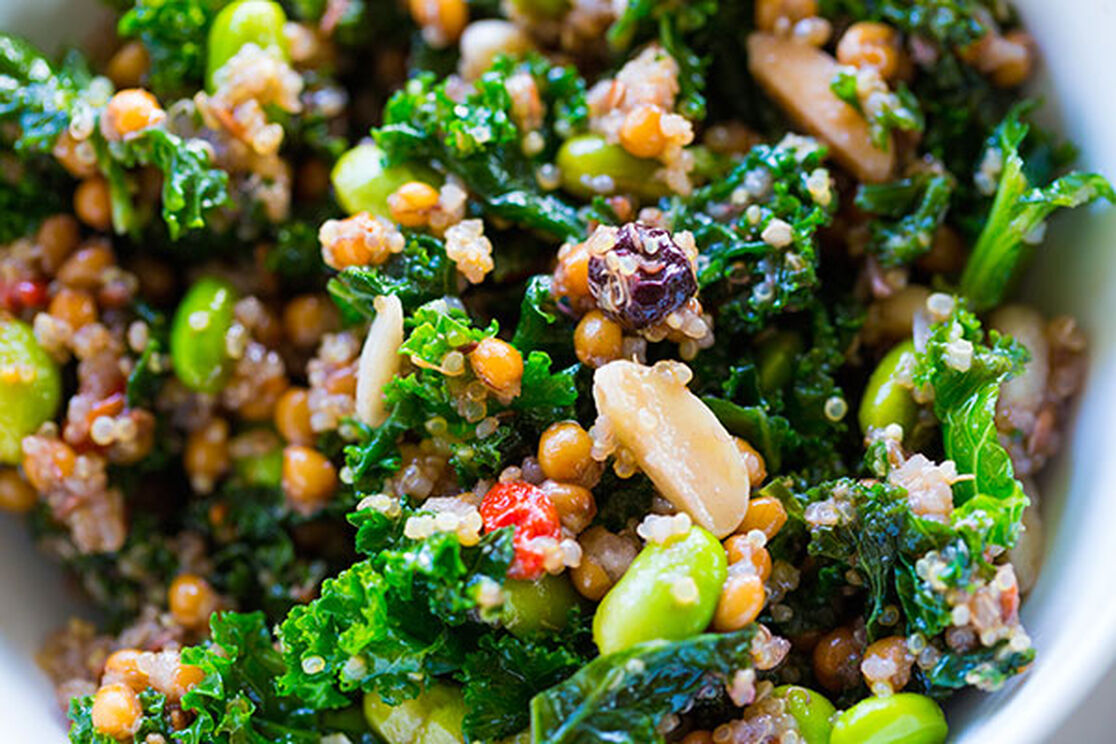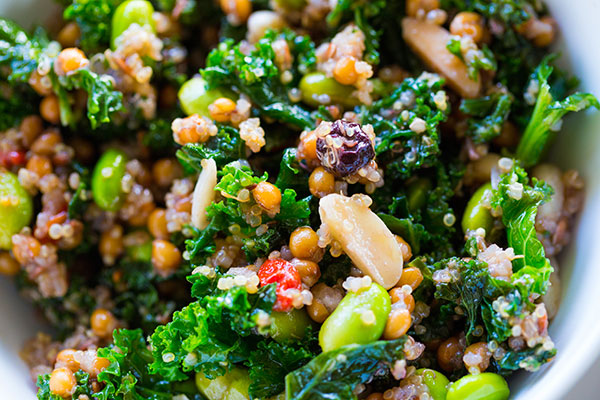With the holidays behind us, it’s time to get back in the rhythm of eating healthy. We love a good salad for lunch, dinner, or as a healthy snack, but even we will admit that they can get a bit boring. So this week we’ll be exploring ways to up your salad game, simply by mixing up your greens!
Many of us were raised on iceberg lettuce — it’s affordable, available, resilient, and a good source of vitamins. In fact, it’s one of the most consumed veggies in America (which isn’t necessarily a great thing). It’s higher in sugar (aka more caloric), lower in total nutrient content, and honestly not the most exciting option out there. Below we’ve profiled 7 alternative leafy greens; choose one, or combine a few. Your taste buds will love the new textures and you’ll feel fresher and fitter than ever!
An Honest Guide to Greens: 7 Alternatives for Your Salad
- Spinach: One of the most nutrient-dense foods in the world, one cup of raw spinach has twice the recommended dose of vitamin K, and half the recommended value of vitamin A, calcium, and iron. It contains more folate than other greens, which is especially important for pregnant and nursing women. It’s also extremely versatile — try adding it to your smoothie or juice, or enjoy cooked in your favorite soups or breakfast dishes.
- Kale: Another nutrient powerhouse, kale has been in the spotlight recently for its abundance of vitamins and minerals — one cup will fulfill your daily need of vitamins A and C. It’s packed with more antioxidants than its competitors, which is key for reducing inflammation and possibly helping to prevent cancer. Try it mixed into a salad, or cooked as a healthy side dish.
- Arugula: It’s the peppery, earthy flavor that makes arugula a salad favorite. It’s slightly lower in nutrient content than its friends, but it does boast a decent amount of vitamins A, B, and C. Mix it with other greens to spice up your salad, or add as a topping to your flatbread pizza.
- Watercress: While more commonly used as a garnish, watercress is not to be overlooked. One cup contains enough to fulfill your daily recommended value of vitamin K, and about 10 percent of your calcium requirement. It’s also known to aid as a digestive, so adding watercress to your diet will keep your tummy happy too. Try it in a salad, or make a tasty watercress soup.
- Radicchio: Better know as those reddish-purple leaves found in pre-mixed salad bags, radicchio is marked by its slightly bitter taste. When compared to other greens, radicchio is among the highest in total phenolic content, which means it’s great at neutralizing dangerous free radicals. It’s also high in fiber, so adding radicchio to your salad with help you stay fuller for longer, and you’ll be less likely to reach for those unhealthy afternoon snacks!
- Swiss Chard: A relative of the beet, but with a taste similar to spinach, swiss chard is gaining popularity. It has full, green leaves, but a reddish stem and veins, so it’s as pretty on the plate as it is pleasing to the palate. While it has a slightly higher sodium content than other leafy greens, recent research has shown that it contains at least 13 different antioxidants. It also contains some iron and calcium. Toss swiss chard into your salad, or roast it for an unexpected (but delicious) side.
- Endive: Also known as escarole, endive is appealing for the extra crunch it provides to salads and sandwiches. It is rich in vitamins, minerals, and antioxidants; one head contains about 60% of the potassium found in a banana. Because of its high water content, endive has been shown to keep you hydrated and help to clear skin. It’s uniquely sturdy leaves can also be used as healthier dipper with your favorite hummus or salsas, in lieu of chips, crackers, or bread.
In general, research shows that (no matter your selection) the darker the leaf, the more nutrients it contains. So look for the outer, darker leaves when shopping for greens. Shop organic whenever possible and always be sure to thoroughly wash your greens to remove any dirt or other contaminants.
This kale salad recipe is a bright, bountiful way to get your nutrition for the day (add your favorite lean protein if you need more fuel):
Kale Yeah Bowl
Ingredients
5 cups chopped kale
1 1/2 cups cooked quinoa
1 cup edamame beans
1/1/2 cup lentils cooked)
2 red bell pepper, diced
1/2 cup halved almonds
1/2 cup raisins
Salt and pepper, to taste
2 tablespoons olive oil
1 tablespoon white wine vinegar
1 tablespoon freshly squeezed lemon juice
Instructions
In a large mixing bowl, combine kale, quinoa, edamame, lentils, pepper, almonds, and raisins; toss well. In a separate bowl, mix oil, vinegar, and lemon juice; whisk to combine. Drizzle dressing over kale mixture and toss evenly. Enjoy!
How do you like to mix a mean salad? Share your salad secrets below!
We aim to provide you with the most honest and credible information possible. This article was reviewed for accuracy by The Honest Team and was written based on sources that are linked at the bottom of the article.
blog_review_statement




